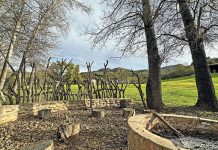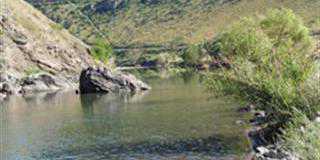Red is an important colour in nature. It’s the colour of communication: plants that need birds for pollination use red flowers to attract them. Many birds such as crimson-breasted shrikes and sunbirds use red to advertise their property rights to nesting sites or territories. Some amphibians and reptiles such as coral snakes and numerous insects use red as warning signals. Primates are the only mammals that can see red and use it to highlight parts of their bodies to indicate their dominance or advertise sexual receptiveness like female baboons.
Humans do the same.
When parts of a message are important, we highlight the letters in red and when a certain day is special we call it a red-letter day.
3 March 2007 was a red-letter day for SA Super 14 rugby teams because they won all four of their matches, both here and abroad. It has never happened before.
The third of March 1953 was also a red-letter day for me as a young boy. My father bought me a champion racing pigeon cock to improve my breeding stock and to this day I can relive the moment first held him in my hands. His name was Lelik (ugly), but to me he was the most beautiful thing in the world, and in the years to come he would sire many champion racers which made our loft famous.
Most field sports people can identify red-letter days they have experienced while pursuing their sport. In some cases they came only once or twice. But am lucky because I’ve had several days that could be painted red, but did not always realise or appreciate the colour of the days when they happened, for example, the day caught a really big small-mouth bass or when shot an exceptional nyala bull that I had hunted for two years. Not being one that chased trophies or records in my life, we cooked and ate the bass after had it weighed and took one bad photograph. It turned out to be a new record that remained unbeaten for 17 years. The nyala was only officially measured six years after shot it and by that time its horns had shrunk by an inch. turned out that even in its reduced state it would have been number one in Rowland Ward at the time it was shot.
However, I did not realise its significance at the time and after six years it had been overtaken by others. One photo was taken of it on that red-letter day, which somehow got lost during those six years. Today only have a photostat copy of the photo.
But a day doesn’t need to be associated with some kind of record or trophy to be red. There were no certificates issued for the joyful days spent with my ageing father, now long gone, on the high seas when he outfished me, or the day my wife really showed me how to catch three-spot bream on the Zambezi, or even the day I succeeded in climbing with my crutches to the top of the big dune at Gobabeb in the Namib. I’ve got photos that help me relive those days, but unfortunately the best thing that ever happened to me was never recorded on film – that red-letter day I met my wife. Today can’t even remember when or where it was.
27 January 1975
The other day was digging through a box full of browned and faded photographs when came across a few old fishing certificates all bearing the same date, 27 January 1975. This took my thoughts back to a very special red-letter day which I never forgot, but of which the details had become rather fuzzy in my mind. Studying these old certificates slowly brought back the forgotten memories. I was on my boat fishing the sandbanks in Durban harbour on the incoming tide. As the water over the sandbanks grew deeper, I could see occasional grey shapes and flashes of silver over the sand, indicating that the fish were starting to move in. I was fishing with two home-made, double-handed fly rods, of which one was rigged with a floating line and a trimmed and modified Invicta trout fly. I snipped off the wing of the fly and attached two black beads to the body near the bend of the hook to resemble eyes. It looked just like a shrimp. The other rod had a sinking line and the flies were white-and-green and white-and-yellow streamer flies that I’d tied myself. Retrieving the shrimp fly with short strips over the sandbank, the first takes I had were a few curious sandfish (Arctoscopus japonica), of which I had caught often enough to know that they made excellent meals.
For a while it was quiet and then suddenly my fly was hit by a missile. Two seconds after the take it jumped 40m away. It was a springer (Elops saurus). The rod had large spinning rod eyes and although there was a tangle in the backing it slipped through without popping the tippet. The screaming reel was like music. In those days there were no large-capacity fly reels as nobody fly-fished in saltwater, so I used centre-pin reels that had very audible ratchets. To this day I dislike fly reels that are silent when a fish runs. After landing the fish I hooked another springer on the next cast, and for some time they struck that fly on almost every cast and each successive one was bigger than the last. The biggest was almost 2m long. In those days we kept most fish we caught, but not the springers – they were too bony.
This day, however, I kept two, including the big one. I think the next fish I hooked was a small queenfish, so I switched to the slightly heavier rod with the sinking line and the streamers. I fished the drop-offs and was soon into the first of a number of kingfish, but later changed back to the lighter rod and the floating line and then started to catch leervis (garrick). I had a great time until the tide turned and the action tapered off. I can’t remember how many fish I caught, but it must have been over 20 or even 30. All I know is that never before have I released so many fish that I otherwise would have kept. It was truly a red-letter day!
Fishing for records
On the way to my parent’s home I stopped at a butchery to have six of the fish weighed on an assized scale. The next day I returned with application form copies, which the butcher completed. One sandfish, one springer, one kingfish and two garricks were recognised as new Northern Transvaal lure-caught records. For the big springer I applied to the Saltwater Fly Rodders of America, the world body at the time, which recognised it as a world record. It weighed 22lb 6oz (10,2kg). When the International Game Fish Association took over the record books it didn’t list the springer, but in my book that record still stands. The photos were unfortunately taken with a Polaroid camera that only produced single copies, all of which were sent off with the applications. So all I have left today are those old certificates, which all bear the same date, 27 January 1975.
Nowadays photography is very easy. Get a good digital camera and take many photos on red-letter days. Make back-ups on CDs, but nobody knows how long they will last so it’s safest to make prints because one day when your hair is white and all you have are your memories, they will be your most valuable possessions – your gateway to the past. – Abré J Steyn Contact Abré J Steyn on 083 253 4822. |fw













